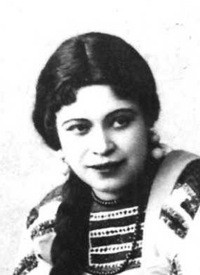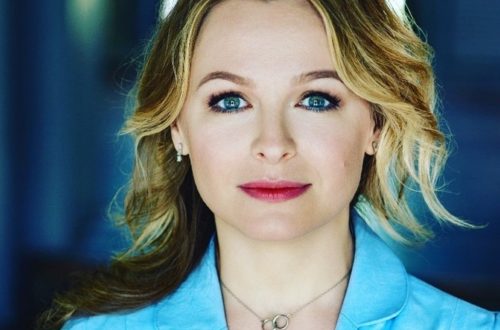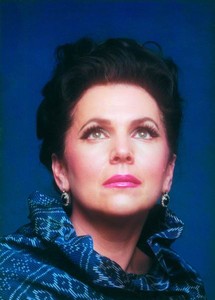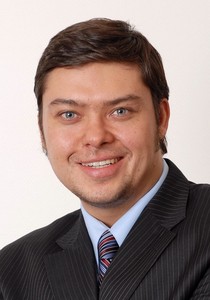
Vera Nikolaevna Petrova-Zvantseva |
Vera Petrova-Zvantseva

Honored Artist of the RSFSR (1931). N. Zvantsev’s wife. Genus. in the employee’s family. At the end of the gymnasium, she took singing lessons from S. Loginova (a student of D. Leonova). From 1891 she performed in concerts. In Apr. In 1894 she gave a concert in Saratov and went to continue her studies in Moscow with the proceeds. cons. (on the recommendation of V. Safonov, she was immediately enrolled in the 3rd year at the class of V. Zarudnaya; she studied harmony with M. Ippolitov-Ivanov, stagecraft with I. Buldin).
After graduating from cons., she made her debut in 1897 in the role of Vanya (A Life for the Tsar by M. Glinka in Orel) in the Opera Association of N. Unkovsky), then she performed in Yelets, Kursk. In 1898-1899 she was a soloist in Tiflis. operas (artistic director I. Pitoev). In the fall of 1899, on the recommendation of M. Ippolitov-Ivanov, she was admitted to Moscow. private Russian opera, where, making her debut as Lyubasha (The Tsar’s Bride), she performed until 1904. In 1901, together with Ippolitov-Ivanov, she initiated the creation of the Moscow Association. private opera. In 1904-22 (with interruptions in the seasons 1908/09 and 1911/12) she sang on the stage of the Moscow. Operas by S. Zimin. Toured in Kyiv (1903), Tiflis (1904), Nizhny Novgorod (1906, 1908, 1910, 1912), Kharkov (1907), Odessa (1911), in the cities of the Volga region (1913), Riga (1915), in Japan ( 1908, together with N. Shevelev), France and Germany.
She had a powerful, even voice with a warm timbre and an extensive range (from A-flat small to B of the 2nd octave), a bright artistic temperament. Use characterized by freedom of scenes. behavior, although sometimes the game acquired features of exaltation, especially in dramas. parties. Artistic The growth of the singer was greatly facilitated by N. Zvantsev, who prepared parts with her. Repertoire art. included approx. 40 parts (Spanish also soprano parts: Joanna d’Arc, Zaza, Charlotte – “Werther”).
“Will the opera be a musical drama or will it turn into some other form of art. But when you listen to such singers as Petrova-Zvantseva, you want to believe that the opera will remain not a sport, not a competition of singers for the power of the voice, not a divertissement in costumes, but a deeply meaningful, inspired stage form of theatrical art” (Kochetov N., “Mosk leaf”. 1900. No. 1).
1st Spanish parties: Frau Louise (“Asya”), Kashcheevna (“Kashchei the Immortal”), Amanda (“Mademoiselle Fifi”), Katerina (“Terrible Revenge”), Zeinab (“Treason”); in Moscow – Margaret (“William Ratcliff”), Beranger (“Saracin”), Dashutka (“Goryusha”), Morena (“Mlada”), Catherine II (“The Captain’s Daughter”), Naomi (“Ruth”), Charlotte ( “Werther”); in Russian stage – Marga (“Rolanda”), Zaza (“Zaza”), Musetta (“Life in the Latin Quarter”).
Petrova-Zvantseva was one of the best interpreters of female images in N. Rimsky-Korsakov’s operas: Kashcheevna, Lyubasha (The Tsar’s Bride). Among other best parties: Solokha (“Cherevichki”), Princess (“Enchantress”), Martha (“Khovanshchina”), Grunya (“Enemy Force”), Zeinab, Charlotte (“Werther”), Delilah, Carmen (Spanish. about 1000 times). According to critics, the image of Carmen she created “marked a major shift in the opera house, characteristic of the struggle for realism on the opera stage that began at the beginning of the XNUMXth century.” Dr. parties: Vanya (Life for the Tsar by M. Glinka), Angel, Elected, Love, Joanna d’Arc, Countess (The Queen of Spades), Hanna (May Night), Lyubava, Lel, Rogneda (Rogneda) ); Amneris, Azucena, Page Urban, Siebel, Laura (“La Gioconda”).
Partner: M. Bocharov, N. Vekov, S. Druzyakina, N. Zabela-Wrubel, M. Maksakov, P. Olenin, N. Speransky, E. Tsvetkova, F. Chaliapin, V. Cupboard. Pela p/u M. Ippolitova-Ivanova, E. Colonna, N. Kochetova, J. Pagani, I. Palitsyna, E. Plotnikova.
Petrova-Zvantseva was also an outstanding chamber singer. Repeatedly performed in concerts with solo parts in the cantatas of J.S. Bach, participated in the “Historical Concerts” by S. Vasilenko with the production. R. Wagner. In the seasons 1908/09 and 1911/12 she gave concerts with great success in Berlin (conducted by S. Vasilenko), where Spanish. prod. Russian composers. The singer’s repertoire also included the poem “The Widow” by S. Vasilenko (1st edition, February 6, 1912, Berlin, by the author) and solo parts in the suite “Spells” (1911), the poem “Complaints of the Muse” (1916) the same composer. N. Miklashevsky (“Oh, don’t be angry”, 1909) and S. Vasilenko (“Tell me, my dear”, 1921) dedicated their romances to the singer. One of the last concerts art. took place in Feb. 1927.
Her art was highly appreciated by A. Arensky, E. Colonne, S. Kruglikov, A. Nikish, N. Rimsky-Korsakov, R. Strauss. Led ped. activity: hands. opera class in moscow Nar. cons. in 1912-30 she taught at Moscow. cons. (professor since 1926), in the late 1920s – 30s. worked in technical schools. V. V. Stasova and A. K. Glazunov (class stage productions).
Pupils: E. Bogoslovskaya, K. Vaskova, V. Volchanetskaya, A. Glukhoedova, N. Dmitrievskaya, S. Krylova, M. Shutova. Recorded on gramophone records (more than 40 products) in Moscow (Columbia, 1903; Gramophone, 1907, 1909), St. Petersburg (Pate, 1905). There is a portrait of P.-Z. artistic K. Petrov-Vodkina (1913).
Lit.: Russian artist. 1908. No. 3. S. 36-38; V. N. Petrov-Zvantseva. (Obituary) // Literature and art. Feb. 1944, 19; Vasilenko S. Pages of memories. — M.; L., 1948. S. 144-147; Rimsky-Korsakov: Materials. Letters. T. 1-2. – M., 1953-1954; Levik S. Yu. Notes of an Opera Singer – 2nd ed. – M., 1962. S. 347-348; Engel Yu. D. Through the Eyes of a Contemporary” Fav. articles about Russian music. 1898-1918. – M., 1971. S. 197, 318, 369; Borovsky V. Moscow Opera S. I. Zimin. – M., 1977. S. 37-38, 50, 85, 86; Gozenpud A. A. Russian opera theater between two revolutions 1905-1917. – L., 1975. S. 81-82, 104, 105; Rossikhina V.P. Opera House of S. Mamontov. – M., 1985. S. 191, 192, 198, 200-204; Mamontov P. N. A monograph about the opera artist Petrova-Zvantseva (director) – in the State Central Theater Museum, f. 155, units ridge 133.





